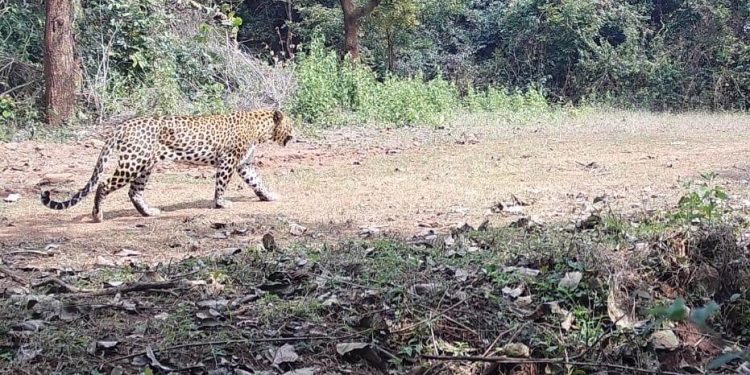Dhenkanal: In good news for animal lovers and wildlife enthusiasts, the leopard population is increasing in Koi reserve forest of Dhenkanal district, sources said Sunday. A tiger census conducted last year pegged the leopard count at seven but this year the number has increased to nine, they added. The forests in Dhenkanal district are rich in bio-diversity. They were once home to the Royal Bengal Tigers. The tigers ceased to exist a long time ago and their absence is now being filled up by the leopards. The Koi and Kandhara reserve forests under Hindol range in the district bordering Satkosia jungle have become the principal habitats of these big cats. There are around 10 villages around the jungle and all the residents said that they have heard the purring of the leopards.
However, snares laid by the poachers to hunt wild animals are posing a serious threat to the survival of these wild animals. There is always the possibility of the leopards getting trapped and dying. Forest department officials have intensified patrolling and security cover in the jungle after reports of the increase in leopard population came to the fore. They said that the actual numbers of the animals can only be ascertained through another census. The leopards have been seen moving in the Koi reserve forest most of the times which are on the fringes of the Satkosia jungle. The movement of the animals has been caught in trap cameras installed on trees by the Forest department.
Recently, a leopard that had run away from the core area of the forest got trapped in a snare and eventually died. A few days back another of the same species died due to illness, villagers said. The back-to-back deaths of the two leopards have sparked concern among Forest officials. They are taking a host of measures in Koi and Kandhara reserve forests to protect the leopards from the wrath of the poachers and other threats. When contacted, DFO Prakash Chand Gogineni said that the Forest department is also planning to increase the population of herbivorous animals. This is because the leopards will need food.
Only a rise in the number of herbivorous animals can help in increasing the leopard count, Gogineni informed and added that plans are afoot to grow more foliage in the jungle. Gogineni stated that a watch tower will be set up soon in the core area to track the movement of the leopards. This apart, patrolling will be intensified and more trap cameras will be installed in the core forests area. The help of the Soil Conservation department will be sought to dig up a pond that will provide water to the leopards. Moreover, local residents will be sensitised to protect the wild animals, added Gogineni.






































